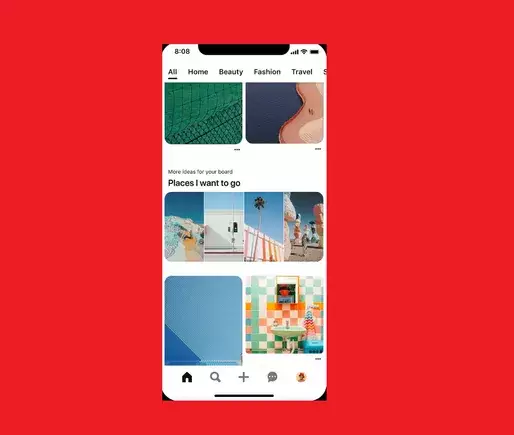The ever-evolving world of social media platforms continuously adapts to the diverse needs of its users. Pinterest, long hailed as a visual discovery engine, has recently introduced innovative features designed to amplify user engagement. With a fresh take on their feed through the addition of “modules,” Pinterest is not just changing the game; it’s rewriting the rules. These new full-width formats aim to bolster interaction by emphasizing related topics and elements that cater to the varied interests of Pinners. But how exactly do these alterations work for the user, and what implications do they hold for marketers?
Understanding the Modules: Navigation Redefined
The recent introduction of two distinct module types on Pinterest marks a significant shift in user engagement. The first type, Landing Page Modules, functions as a gateway. Users tapping on these modules are directed to dedicated landing pages filled with Pins matching their interests. In essence, this format not only streamlines the user experience but also broadens their exposure to relevant content.
On the other hand, Carousel Modules present a visually engaging collection of Pins displayed in a horizontal format. This kind of module invites users to scroll through a curated selection of ideas, effectively expanding their creative horizons. Collectively, these modules are designed to provide a more immersive experience, encouraging users to explore various inspirations and approaches they might not have encountered otherwise.
Smart Engagement: How Pinterest Tailors Content
One of the most significant concerns with incorporating new features into platforms is the potential for overwhelming users. However, Pinterest seems to have adeptly sidestepped this pitfall through a sophisticated system that customizes the display of modules based on user interaction. Users who repeatedly bypass a particular module will see it reduced in frequency, a thoughtful maneuver that prevents stagnation in their feed.
This intelligent system intricately analyzes user behavior, assessing how often a module has been viewed without engagement. Consequently, Pinterest can make informed decisions about what to show users. This nuanced approach ensures that the content remains fresh and relevant, significantly enhancing the user experience and fostering interaction.
Dynamic Display: The Art of Balancing Content
Another remarkable aspect of Pinterest’s strategy is the introduction of a dynamic display system. Initially, modules occupied fixed slots in users’ feeds, which could inadvertently lead to the replacement of engaging Pins with less appealing modules. Recognizing this issue, Pinterest has developed a “skip slot” technique, allowing Pins and Modules to coalesce in a way that prioritizes content likely to yield higher engagement. This dynamic blending of elements showcases Pinterest’s commitment to both creativity and user satisfaction.
By assessing predicted engagement, Pinterest ensures that only the most compelling content captures users’ attention. This meticulous curation reflects the platform’s dedication to enhancing the overall user journey, making it essential for marketers to grasp these shifts in content visibility and user habits.
Implications for Marketers: Navigating the New Terrain
As Pinterest rolls out these innovative modules, marketers are faced with new opportunities and challenges. Understanding the mechanics behind these modules is crucial for brands looking to optimize their presence on the platform. The capacity to create engaging Landing Page or Carousel Modules could significantly influence their reach and resonance with target audiences.
Moreover, marketers must adapt their strategies to align with Pinterest’s engagement-focused algorithms. Tailoring content to inspire interaction, while remaining mindful of user behavior, will likely become a cornerstone of successful campaigns. Brands that can leverage the advantages of these modules will find themselves at the forefront of the narrative, establishing meaningful connections with consumers.
In this thrilling new phase for Pinterest, the introduction of dynamic modules signals a commitment to fostering creativity and enhancing user interaction. While it may seem like an adventure into uncharted waters, this evolution presents a valuable opportunity to explore innovative ways of engaging with content. For users, it’s a treasure trove of inspiration; for marketers, it’s a chance to reshape their strategies in a transformative landscape. As Pinterest continues to innovate, the journey toward greater engagement and discovery looks brighter than ever.

